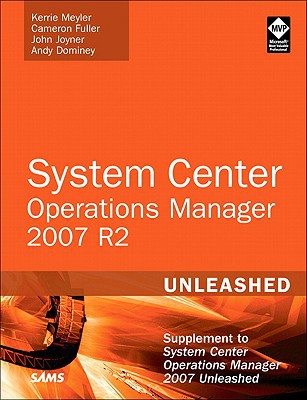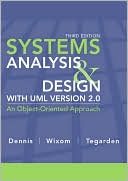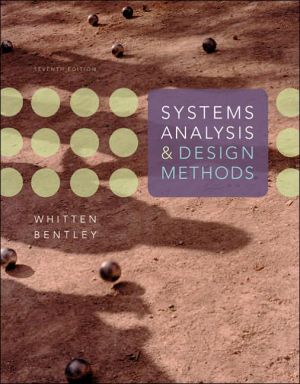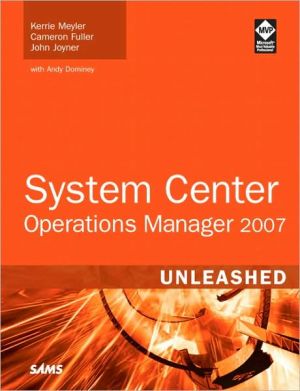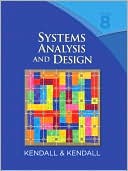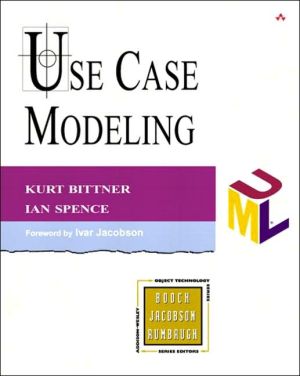Civil and Environmental Systems Engineering
Civil and Environmental Systems Engineering is designed for a junior- or senior-year course on systems analysis and economics as applied to civil engineering. This civil system/engineering economics course has evolved over roughly the last 30 years and draws on the fields of operations research and economics to create skills in problem solving. Because of the presence of several more advanced sections and sections focusing on applications in the book, it may also he useful as a text for...
Search in google:
Exceptionally practical, itfeatures several chapters that present new techniques and methodologies in thecontext of real-life problem situations. Broad andcomprehensive in coverage — and reader-friendly in approach, this bookfocuses on the most modern skills available for the design, operation andevaluation of civil and environmental engineering systems, optimization/systemsmodeling and engineering economics. Describes how and why linear programmingworks. Also, provides a solid treatment of multiple objective programming.Practicing Civil and Environmental Engineers. Booknews A textbook for a junior or senior course on systems analysis or systems analysis and economics as applied to civil engineering, but advanced material included make it suitable as well for a first-year graduate course introducing civil systems. Focuses on linear programming and other forms of optimization, and engineering economics. Annotation c. by Book News, Inc., Portland, Or.
ABOUT THE TEXT\ This text is designed for a junior or senior year course on systems analysis, or systems analysis and economics, as applied to civil engineering. This civil system/engineering economics course has evolved over roughly the last 30 years and draws on the fields of operations research and economics to create skills in problem solving. Because of the presence in the book of several more advanced sections and sections focusing on applications, the book may also find use as a text for first-year graduate courses that introduce students to civil systems.\ As the field of operations research evolved from its origins during World War II, one area in particular grew in popularity. That area, known as mathematical programming, found wide application not only as a means to optimize the design of chemical and mechanical systems in industry but also as a means to find promising alternatives in civil and environmental engineering decision problems. Most popular among the computer-based optimization techniques has been and continues to be the method known as linear programming, a procedure that operates on one or more objectives subject to economic, resource, or logic constraints.\ Mathematical programming and linear programming, in particular, have found wide application in civil engineering problem solving. These techniques have been used in structural design, in highway alignment, in intersection light timing, in subway and rail route design, in traffic prediction, in terminal location, in the routing of collection vehicles, in the routing of hazardous wastes, in equipment selection, in landfill location, in the siting of transfer stations, in crew scheduling andallocation, in waste treatment plant design and location, in waste load allocations on a river, in the design of hydrologic models, in the selection of projects to bid on, in the design of water distribution systems and sewer systems, in cost sharing, in reservoir design and operation, in fire station siting, in ambulance deployment, and in many other civil and environmental engineering areas. The power of these tools to develop efficient alternatives is enormous. So many applications have been created that a number of journals have been established principally emphasizing civil systems optimization problems; these include Water Resources Planning and Management, Transportation Science, Civil Engineering Systems, Water Resources Research, and The Journal of Infrastructure Systems, among others.\ Our treatment of linear programming and other forms of optimization is pragmatic. We prove no theorems but do, however, provide a description of how and why linear programming works. If we did not, we would be handing the student a "black box" and telling the student to "believe." Instead of theory, we offer application in large quantities to motivate the student to learn the methodologies. We first offer problems that are not terribly difficult to formulate, and then problems that demand greater skill to put in solvable forms. Our thrust is to build up skills in an orderly fashion as there are greater and lesser challenges in formulation and greater and lesser challenges in solution method. Later chapters are, of course, the most demanding. These later chapters are a unique feature of this text. Titled "Lessons in Context" followed by the name of an application field, these chapters offer new techniques within the framework of a problem setting, a problem setting that demands the new methodologies that are then introduced. Our experience suggests that the "need" for the methodologies helps to motivate students to learn them.\ A second focus of this book, in addition to linear programming and associated tools of optimization, is the closely allied field of engineering economics. At first glance, our treatment of engineering economics would appear to be guided by the need to cover all topics necessary to prepare undergraduate engineers for the professional engineers' examination on this important topic. These topics include the time value of money, cash flow analysis, and selection of economic alternatives. Cost analysis and economic analysis over time are important considerations in the development of models that help identify optimal management decisions. This is because virtually all engineering management decisions in the public sector involve significant, and often enormous, cost considerations over potentially very long periods of time. Hence, our presentation of engineering economics is designed to provide students a solid foundation upon which to compute important model parameters. Indeed, the modeling context provided for this important topic gives added relevance to this all too often supposititious subject.\ These two related topics, optimization/systems analysis and engineering economics, are the core of this book. When the student has completed a course in these topics using this text, or has read this book independently, as it is quite possible to do, he or she will have learned the most modern skills available for the design, operation, and evaluation of civil and environmental systems. CHANGES IN THE SECOND EDITION TO CIVIL AND ENVIRONMENTAL SYSTEMS ENGINEERING\ The first 40% of the book has been extensively reorganized as well as supplemented with new materials in response to requests from faculty who use the text in their courses in civil and environmental systems engineering. Faculty requested a more paced start for the text, a start in which students were not asked to formulate optimization models in the first chapter. Instead, they preferred that more of the philosophy and the ideas behind model building be presented at the outset. We have done precisely this. The first chapter is now devoted to a combination of historical development of systems analysis and the steps a model builder follows in structuring an optimization model. The formulated linear programming examples that appeared in Chapter 1 in the first edition are now distributed later in the text. Verbal descriptions of settings where models can be employed are now offered in Chapter 1, and the student is challenged to identify, in the context of these settings, not only constraints and appropriate decision variables but also needed parameters and problem objectives. Nine new end-of-chapter exercises expand the number of verbally described settings and offer the student further opportunity to develop formulation skills without the necessity of employing mathematics.\ The new Chapter 2 now consists of the general form of the linear programming problem and nine example or stylized problems that are described in detail as well as solved to help introduce the student to the concept of optimization modeling. Of these example problems, four are entirely new to the text, expanding the range of problem settings that the student now encounters. These new problems include:\ \ an air pollution linear programming problem in which cost is minimized subject to air quality constraints,\ a land and species preservation integer programming problem in which the least number of parcels are chosen to preserve a set of endangered species,\ a nonlinear programming problem in cost-efficient building design, and\ a nonlinear optimization problem that seeks the design of a maximum volume tent.\ \ Also, the shared recycling problem has been moved to later in the text, as faculty users requested, and the bidding problem, from a later chapter, is now included here to provide another example of a zero-one programming problem. End-of-chapter exercises for Chapter 2 include exercises that appeared at the end of old Chapter 1.\ Chapter 3 presents the graphical solution of the simplex plus more complex problems and Chapter 4 goes on to the mathematics of the simplex rules. Both chapters were generally applauded in the previous edition and so have not been altered extensively, a statement that can be made, as well, about multiple-objective programming presented now in Chapter 5.\ Significant organizational and presentational changes characterize Chapters 6 and 7, the chapters on network flow and integer programming. In the previous edition, these two topics were interwoven to emphasize the very interesting conceptual relations between these two subjects. The organization was recognized by faculty as well-intended but eclectic. And the organization of the first edition seems to have made the subject of network flows less accessible to the average student. We have chosen in this edition to present network flows in its own chapter, Chapter 6, and to draw together in one chapter all of the major network flow concepts for ease of access. This organization was field tested in 2002 and offers definite advantages. Students penetrated this material relatively easily—as compared to the topics of integer programming models and the technique of branch and bound. A new set of end-of-chapter exercises are included in Chapter 6 with more civil systems engineering examples. These problems are easier than the integer programming exercises in the old Chapter 5, but still sufficiently challenging to sort out the best students from the pack. The topics of Chapter 6 are the shortest path problem, trans-shipment problems, transportation problems, the traveling salesman problem, and maximum flow.\ The topics of integer programming, branch and bound, and applications of integer programming are now ensconced in their own chapter, Chapter 7, without the network flow models. While these IP topics are certainly important subjects in many civil and environmental systems courses, we have, by choice opted to place these topics in their own chapter, allowing the instructor the freedom to easily choose these topics or not. And we still make it possible to study independently the classical and widely applicable models of network flows. This organizational and perspective change is an improvement that many instructors will welcome.\ In addition to the changes to the optimization chapters that are described above, a number of new end-of chapter exercises have been added to enhance the already well-received engineering economics chapters and to heighten the students' experience in this core area.\ We would like to acknowledge the following people who reviewed the first edition of the book and offered us helpful and thoughtful suggestions for its improvement. Our thanks go to Teresa Adams, a specialist in transportation infrastructure management at the University of Wisconsin-Madison, to David Ahlfeld a specialist in groundwater management and environmental systems modeling at University of Massachusetts, to David Lange whose specialties include materials, engineering economics, systems and structures at the University of Illinois at Urbana, to Jon Liebman, a pioneer in the application of systems methodologies to numerous areas of civil and environmental engineering at the University of Illinois at Urbana, and to David Yates, a systems specialist at University of Colorado at Boulder and at the National Center for Atmospheric Research.
ForewordPreface1Explaining Systems Analysis2Models in Civil and Environmental Engineering3A Graphical Solution Procedure and Further Examples4The Simplex Algorithm for Solving Linear Programs5Linear Programs with Multiple Objectives6Linear Programming Models of Network Flow7Integer Programming and Its Applications8Scheduling Models: Critical Path Method9Decision Theory10Lessons in Context: Simulation and the Statistics of Prediction11Lessons in Context: a Multigoal Water Resources Problem Utilizing Multiple Techniques12Lessons in Context: Transportation Systems13Dynamic Programming and Nonlinear Programming14Engineering Economics I: Interest and Equivalence15Engineering Economics II: Choice Between Alternatives16Engineering Economics III: Depreciation, Taxes, Inflation, and Personal Financial PlanningAppCompound Interest TablesIndex
\ BooknewsA textbook for a junior or senior course on systems analysis or systems analysis and economics as applied to civil engineering, but advanced material included make it suitable as well for a first-year graduate course introducing civil systems. Focuses on linear programming and other forms of optimization, and engineering economics. Annotation c. by Book News, Inc., Portland, Or.\ \


